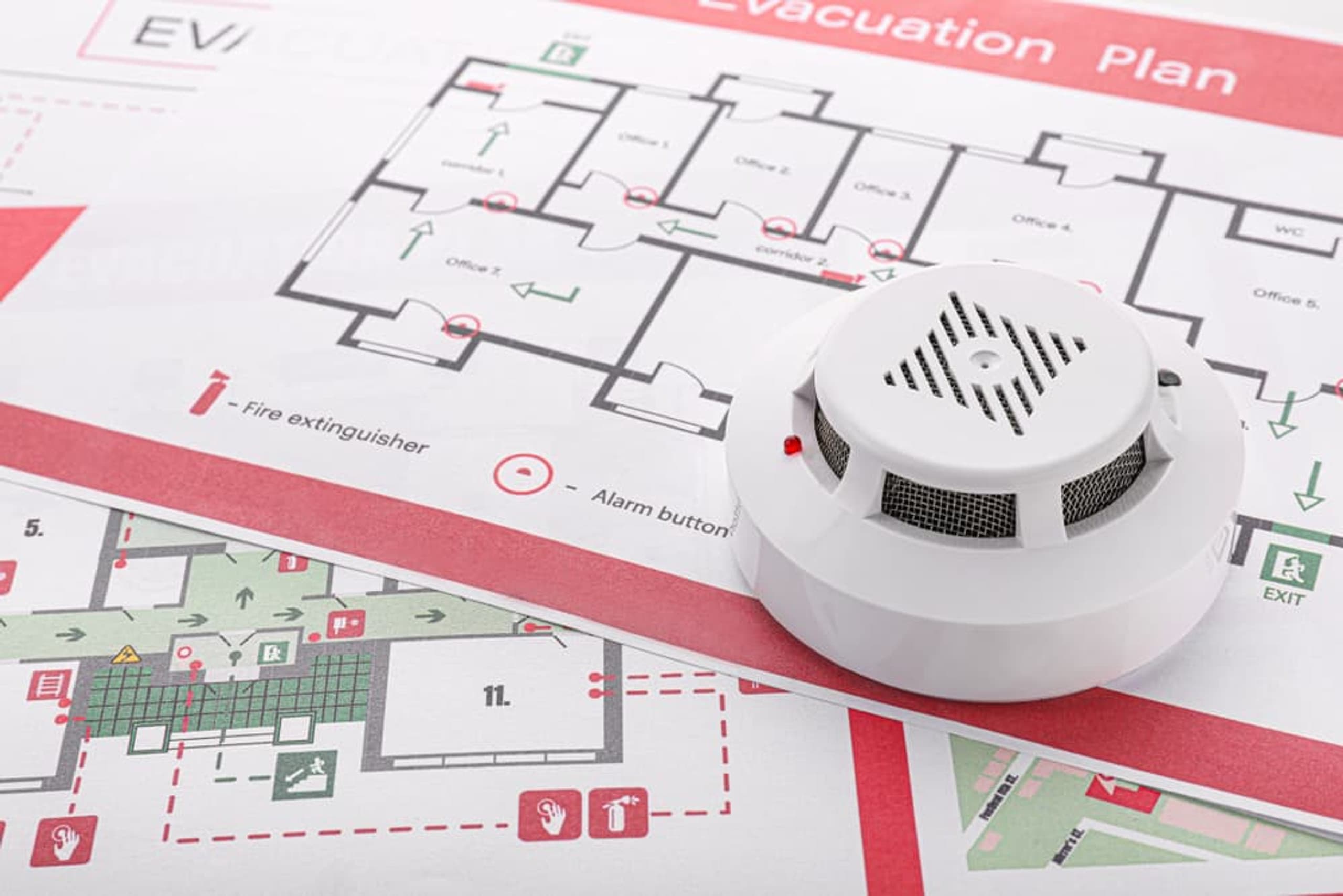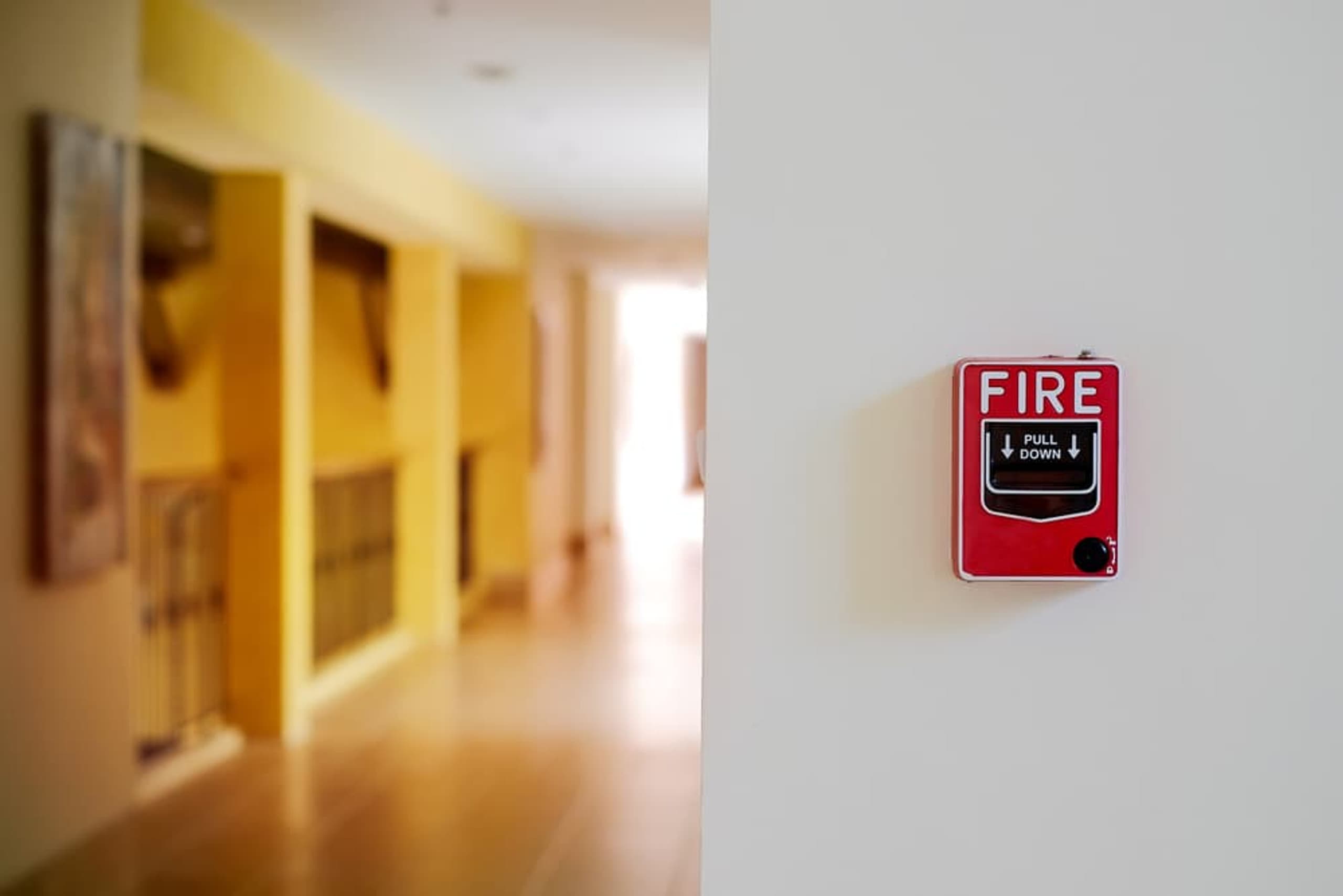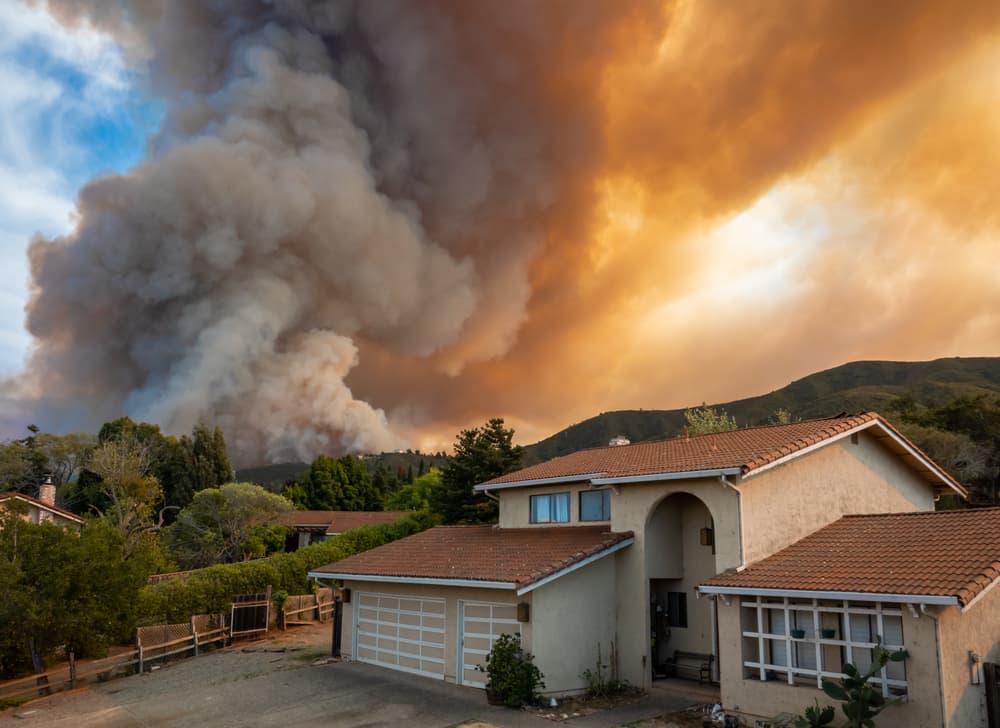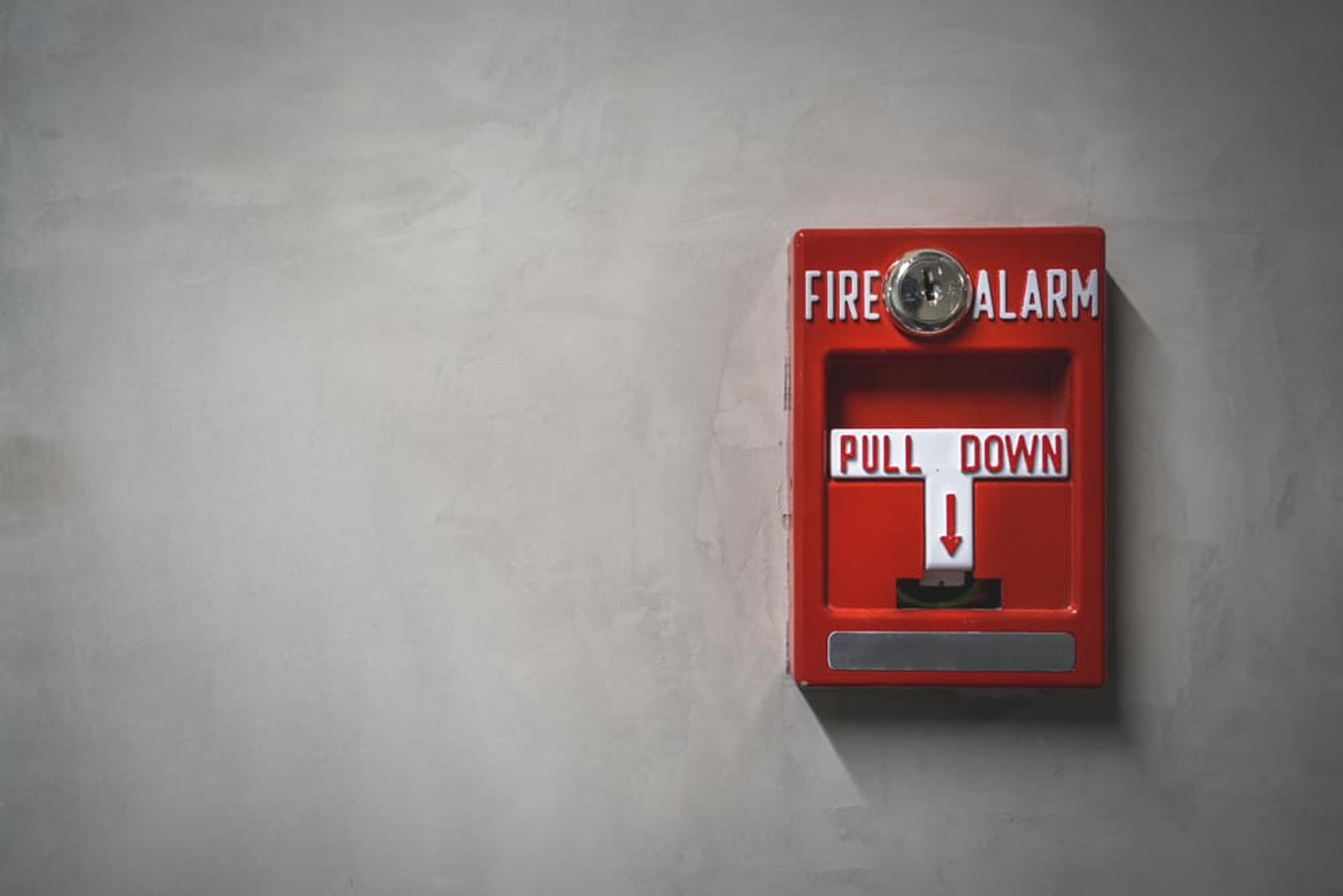Everything You Should Know About Fire Safety
Fire safety is critical to our daily lives, yet it often takes a back seat until an emergency strikes. Whether you're a homeowner, business owner, or simply someone concerned about protecting lives and property, fire safety is something you should not take lightly.
In this comprehensive guide, we will dive into the world of fire safety, giving you tips on how you can keep your home and loved ones safe during a fire. Moreover, we will look into the elements of fire safety and the importance of fire safety awareness for homes and businesses.
Now, let’s look into the guide.
Everything You Should Know About Fire Safety
What Is a Fire Protection Plan
Is Fire Protection Worth It
How to Protect Your Home from Forest Fire
When Is Fire Safety Month
Do's and Don'ts for Fire Safety
What Are the Four Areas of Fire Prevention
Keep Your Home Safe with RDR Technologies
What Is a Fire Protection Plan
Whatever your property is, fire safety is an essential component of keeping a secure environment. A well-organized fire safety plan is one of the most important instruments for guaranteeing fire safety.

What Are They
A fire safety plan is a comprehensive strategy designed to prevent and manage fire emergencies effectively. It outlines the necessary information for people to follow in case of a fire emergency.
A fire safety plan should include information on fire prevention, emergency exits, evacuation plans, fire alarm systems, extinguishing fires, and recovery protocols. Such a plan can be tailored to the specific needs of the intended facility.
Elements They Should Include
A well-crafted fire safety plan comprises various crucial elements. Here are the key elements that a fire safety plan should have:
- Fire prevention: Prevention is the best firefighting measure there is. Workers must get fire safety training to become more aware of the risks associated with fires.
- Fire retardant paints: These specialized paints play a significant role in enhancing fire safety. Fire retardant paints contain chemicals that delay the spread of flames, giving occupants more time to escape.
- Fire fighting: Fire safety plans should include active fire protection(AFP) equipment inspections. This includes fire alarms, fire extinguishers, fire sprinkler systems, and smoke detectors.
- Emergency evacuation: Management should always prioritize proper evacuation in a fire emergency. Everyone should be familiar with the emergency exit map, contact information for the appropriate safety authorities, and other fire emergency procedures.
Is Fire Protection Worth It
Fire prevention is crucial to ensuring the safety and well-being of our homes and loved ones. One of the most effective tools in fire preventive measures such as fire retardant paints.
These specialized paints play a vital role in preventing fires in our homes and significantly reduce the risk of fires.

Why Do I Need Fire Protection?
Fire protection is an essential aspect of building safety, and one method of achieving this is through fire retardant paints. These paints are specially formulated to resist high temperatures and suppress fire spread.
Here are some reasons why fire protection is important:
- Better surface fire resistance: Fire retardant paints are designed to enhance fire resistance to surfaces they are applied to. These paints contain special additives that react when exposed to high temperatures, forming a protective insulating layer.
- Minimized smoke and toxic gas emissions: Fires pose a direct threat through flames and the smoke and toxic gases they produce. Fire retardant paints not only slow down the combustion process but also inhibit the release of harmful chemicals and gases.
- Prevention of structural damage: Fires can cause extensive structural damage to a building, making it unsafe even after the flames have been extinguished. Fire retardant paints help prevent fire damage by slowing down the deterioration of structural components under intense heat.
- Compliance with safety regulations: Many local building codes and safety regulations require specific fire protection measures to be in place. By utilizing these paints, you demonstrate a commitment to the safety of your household and the surrounding community.
By incorporating retardant paints, you take a proactive step toward safeguarding your loved ones and your property from fires. Fire prevention is a responsibility that we all share as homeowners.
How to Protect Your Home from Forest Fire
The frequency and severity of wildfires are growing all over the United States. Homes located in fire-prone areas pose a threat to family members that must be taken care of. You have to establish an effective fire escape plan when a fire starts.
Keeping your home and family members safe during a fire is a must.

How To Protect Your Home
Here is what you should do to protect your home from forest fires:
- Clean your roof and deck: Small flames and burning embers are the most common reasons a structure catches fire. If you live in a fire-prone area, use fire-resistant materials and remove flammable materials from your home.
- Keep embers out: Embers are pieces of burning wood or vegetation that can travel over a mile when airborne. Prevent embers from entering your home by sealing vents and other openings.
- Create a defensible perimeter around your home: Create a secure space that includes your home and everything around it in a 100-foot radius. Safeguarding the 5 feet around your home is not enough if you live in a fire-prone area.
- Apply fire retardant paints: Fire-retardant paint is an excellent defense against wildfires. These specialized paints contain properties that can inhibit the spread of flames and reduce the surface temperature of the treated area.
Protecting your home from forest fires requires a proactive approach and thoughtful planning. Stay vigilant, stay prepared, and ensure that your home is well-equipped to withstand the challenges that forest fires may present.
When Is Fire Safety Month
Every year, October is Fire Safety Month, when communities raise awareness of fire safety and prevention. This initiative educates individuals and families about the measures they can take to prevent fires and protect lives and property.

What is Fire Safety
Fire safety encompasses many practices and precautions designed to minimize the risk of fires and their devastating consequences. It involves educating individuals about safe practices safety plans, and implementing fire-resistant materials in buildings.
One material of crucial importance is fire-resistant paint. Fire-resistant paints are an essential part of fire safety measures, providing an additional layer of protection against fires.
Fire-resistant paints are specially formulated to withstand high temperatures and slow down the spread of fires. These paints create a barrier that slows combustion, allowing occupants to escape and firefighters a better chance to control the blaze.
When is Fire Safety Month?
Fire Safety Month takes place annually throughout October. As the fall season arrives and temperatures start to drop, many households begin using heating appliances to keep warm. While these appliances provide comfort, they also pose an increased fire risk.
During Fire Safety Month, communities often organize activities aimed at empowering individuals with the knowledge and skills needed to respond effectively in case of a fire emergency. Additionally, Fire Safety Month allows businesses and homeowners to assess their properties and implement necessary safety measures.
Fire Safety Month is a crucial annual observance highlighting the importance of fire safety and prevention. It serves as a reminder that fires can devastate lives and property, but through awareness and preparation, their impact can be mitigated.
Do's and Don'ts for Fire Safety
Fire safety is of the utmost importance in any setting, whether at home, in the workplace, or in public spaces. By following the do's and avoiding the don'ts, you can significantly reduce the risk of fire accidents and ensure the safety of yourself and those around you. In this blog post, we will outline the key do's and don'ts for fire safety.

Do’s
Here is what you should do regarding fire safety:
- Install smoke alarms: Smoke detectors are essential for early detection of fires. Make sure to install smoke detectors on every level of your home or building and test them regularly to ensure they are working properly.
- Have fire extinguishers: Keep fire extinguishers in easily accessible areas, such as the kitchen, and near potential fire hazards. Learn how to use them effectively and teach other family members or colleagues.
- Create a fire escape plan: Prepare an escape plan and ensure that all family members or employees are aware of it. Practice fire drills regularly so that everyone knows what to do in case of a fire emergency.
- Use fire-resistant materials: Invest in fire-resistant materials for your home or workplace. Fire-resistant paints, for example, can greatly reduce the spread of fire and provide valuable time for evacuation.
- Store flammable materials safely: Keep flammable materials, like cleaning agents, in proper containers and store them in a well-ventilated area away from heat.
Don’ts
Now, here is what you shouldn’t do:
- Leave open flames unattended: Never leave candles, stoves, or any other open flames unattended. Always extinguish them before leaving the room or going to bed.
- Overload electrical outlets: Avoid overloading electrical outlets by plugging in too many devices. Use power strips with surge protectors to distribute the load evenly.
- Neglect electrical maintenance: Regularly inspect electrical cords and replace any frayed or damaged ones immediately. Avoid running cables under rugs or in high-traffic areas where they can get damaged.
- Block fire exits: Do not block fire exits with furniture, clutter, or any other objects. Fire exits need to be clear and easily accessible at all times.
- Smoke in restricted areas: Smoking should only be done in designated smoking areas. Avoid smoking in bed or in areas where flammable materials are present.
Fire safety should never be taken lightly. By following the do's and avoiding the don'ts, you can reduce the risk of fire accidents and protect yourself and others.
What Are the Four Areas of Fire Prevention
Fire prevention is crucial in ensuring the safety of individuals and protecting property. By implementing effective fire prevention measures, potential risks can be minimized, and the occurrence of devastating fires can be significantly reduced. Here, we will discuss the four areas of fire prevention you should keep in mind at all times.

Equipment
One essential aspect of fire prevention is the use of appropriate equipment. From fire extinguishers to smoke detectors, having the right tools in place can make a significant difference in the event of a fire. Additionally, fire-resistant paints are vital in minimizing the spread of flames.
Fire-resistant paints not only buy valuable time for evacuation but also limit the extent of fire damage, making them an essential asset in the fight against fires. Applied like traditional paints, they find utility in residential and commercial settings.
Engineering
Another crucial area of fire prevention is engineering. This involves implementing structural measures to minimize fire hazards and improve the overall safety of a building. Proper ventilation systems and electrical wiring also significantly prevent fires caused by overheating or electrical faults.
Education
Fire prevention education is essential for creating awareness and promoting responsible behavior. Educating individuals about fire safety measures, such as properly storing and handling flammable materials, can reduce the likelihood of fire incidents.
Training employees on evacuation procedures and providing fire safety drills can also enhance preparedness and response in case of emergencies.
Evaluation
Regularly evaluating and assessing fire prevention measures are crucial to identify potential risks and make necessary improvements. Conducting fire risk assessments, inspecting fire safety equipment, and ensuring compliance with relevant regulations are vital for maintaining a safe environment.
Fire prevention requires a comprehensive approach covering equipment, engineering, education, and evaluation. By synergizing these four areas, individuals, communities, and organizations can create an environment that minimizes the risk of fires.
Keep Your Home Safe with RDR Technologies
Fire safety is a topic of paramount importance that affects us all, regardless of where we live or work. It's not a matter of if but when a fire emergency may occur. We hope the information provided here encourages you to proactively safeguard your surroundings.
By implementing the strategies and practices outlined in this guide, you can significantly reduce the risks associated with fire and ensure a safer environment for everyone. Remember, knowledge is the key to prevention, and preparation is the key to survival.
Fire safety is a shared responsibility, and by taking the necessary steps, you can make a profound difference in your safety and the safety of those around you. Stay informed, stay vigilant, and be fire-safe. RDR Technologies is committed to providing you with the necessary equipment to protect your home. Contact us and learn more about our fire retardant paints.
Recent Posts
-
Halloween Decor Safety: Protecting Costumes, Props & Haunted Houses with Fire Retardants
Halloween is one of the most creative holidays of the year. From glowing jack-o’-lanterns to elabora …Nov 5th 2025 -
Cost-Benefits of Investing in Fire Retardant Coatings
In today’s construction and safety-conscious environment, protecting buildings, assets, and people h …Nov 5th 2025 -
Fire Resistant vs Fire Retardant vs Intumescent: What's The Difference
When it comes to fire safety, the terms fire-resistant, fire-retardant, and intumescent are often us …Nov 5th 2025




